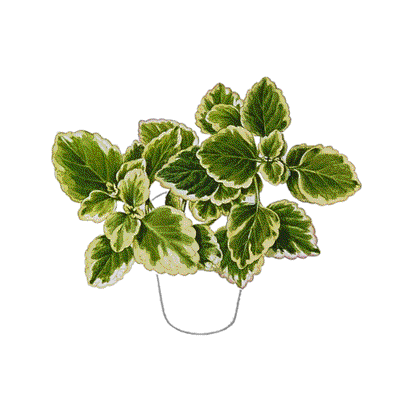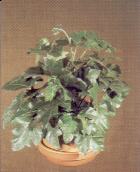 |
 |
 |
 |

Details from 2 different sites
CHARACTERISTICS:
Hanging Ivies are elegant and rich looking,
easy to grow, and they age gracefully. Keep an eye out for spider mite.
If you catch the pest and spray early your ivy will stay healthy looking.
We emphasize early pest detection because mites do extensive damage in
little time.
PRUNING:
They can be trained to cover shapes with
their vines, but they need constant clipping directing. We prefer our ivies
hanging or over a ledge. They need regular trimming to keep their shape.
Cuttings can be easily rooted in water
CHARACTERISTICS:
Plectranthus species come from Africa
and Australia but are called Swedish ivy because they were first grown
as house plants in Sweden. Most are fast-growing trailing soft-stemmed
plants with roundish thick-textured leaves shallowly scalloped along the
edges. All are easy to grow, even in plain water, and the trailing ones
are especially attractive in hanging containers.
Swedish ivy has 1 1/2- to 2-foot-long
trailing stems that bear waxy dark green leaves about 1 inch across. The
white-edged Swedish ivy, a bushy plant 8 to 12 inches tall, has 2- to 3-inch
hairy green leaves with creamy white edges. The candle plant, one of the
most attractive trailing types with stems up to 2 feet long, has 1-inch
bronze-green leaves accented by a network of bright silvery veins; the
leaf stalks and undersides of old leaves are purplish. The variegated candle
plant, P. oertendahlii 'Variegatus', has dark green foliage with broad,
irregular white blotches. The purple-leaved Swedish ivy has trailing stems
up to 2 feet long; its 3/4-inch purplish green leaves are covered with
tiny velvety hairs and have dull purple undersides.
HOW TO GROW.
Swedish ivies do best in bright indirect
or curtain-filtered sunlight; if only artificial light is available, provide
at least 400 foot-candles. Night temperatures of 55° to 65° and
day temperatures of 65° to 75° are ideal. Keep the soil barely
moist at all times. Feed established plants at two-month intervals with
a standard house-plant fertilizer diluted to half the minimum strength
recommended on the label, but wait three to four months before feeding
newly purchased or potted plants. Repot overcrowded plants at any season,
using a mixture of 1 part loam, 1 part peat moss or leaf mold and 1 part
sharp sand; to each gallon pailful of this mixture add 1 1/2 teaspoons
of 20 per cent superphosphate, 1 tablespoon of ground limestone and 2 teaspoons
of 5-10-5 fertilizer. Otherwise, use a packaged general-purpose potting
soil. Pinch off long stems at any season to encourage dense branching;
these tips can then be rooted to make new plants. Watch for mealybugs.